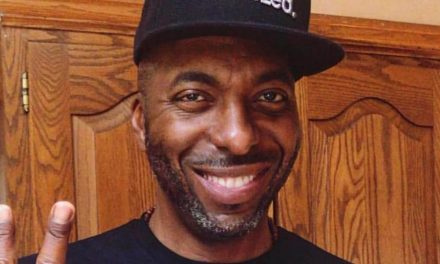And that means you’re soon likely to see more drug ads — both overt and stealthy — on social media.
The in-your-face variety will likely look like the mobile Facebook ad just launched by Bayer. All the small print warning of a drug’s possible side effects flits by in an automated scroll, technology that Facebook is using for the first time for the pharma industry.
To make promotion on Facebook even more pharma-friendly, Facebook is also letting drug makers turn off comments on the pages used to promote specific products. That’s a huge issue for the pharmaceutical industry, which could get in hot water with regulators if it failed to report unverified aches and pains posted by patients in Facebook comments as “adverse events” that could result from taking the drug.
Finally, the social media giant is working to build up “community pages” that bring together users who all share a particular medical condition. Those pages can be sponsored by drug makers — who just so happen to market a medicine to treat that condition.
All these new features could send pharma spending on social media skyrocketing.
“Pharma is as anxious to use social media as social media is to sell it to them,” said Bob Ehrlich, CEO of the consulting firm DTC Perspectives.
The industry spent $5.2 billion on drug ads last year — and that doesn’t even include digital advertising, which is harder to measure but estimated in the low hundreds of millions annually.
Drug makers have long been able to run regular ads that show up in Facebook’s news feed or in the right column on a desktop screen. But they haven’t spent much on the site, in part because of deep uncertainty about what federal regulators would allow. (The Food and Drug Administration issued draft guidance in 2014 but has not laid out firm, clear rules.)
Social media in general has been a quagmire for pharma companies. Questions abound: For instance, could a company get in trouble with regulators if patients used Facebook comments to advise one another to try a particular drug for a purpose not approved by the FDA?
Regulators have also cracked down on drug ads that don’t include side effects. When Kim Kardashian, a spokesperson for Duchesnay Inc., posted a selfie on Instagram touting a morning sickness drug, the FDA noted it didn’t include the required list of side effects — and required her to put up a follow-up Instagram post with all the fine print.
Despite such pitfalls, social media is a tempting target for ads. Drug makers, like all advertisers, can specifically target certain demographics and interest groups in Facebook’s pool of 1.7 billion monthly users.
To encourage pharma companies to venture into social media despite such fears, Facebook created a new team a year ago specifically to work with them.
“This was borne out of tons of interest we were getting from pharmaceutical advertisers to figure out Facebook,” said Danielle Salowski, industry manager for Facebook’s health team.
After months of keeping quiet, Facebook’s now ready to trumpet its new push. At an industry conference last week, it announced its first big achievement: Bayer’s Facebook ad, a spot launched several weeks ago that only appears on mobile phones.
Promoting an auto-injector for a multiple sclerosis medication, the ad plays like a video, automatically scrolling through a litany of possible side effects, such as liver failure, serious allergic reactions, and depression or suicidal thoughts. (John Mack, who publishes the digital newsletter Pharma Marketing News, noted that this is not a new idea; pharma marketers have “been able to do that using plain old banner ads on websites for many years,” he said.)
Another new feature allows Facebook users who see the ad to call a nurse hotline with one click.
“We recognized a targeted, innovative opportunity to reach the community with information that was potentially relevant to them,” Bayer spokeswoman Rose Talarico said. She called Facebook “an excellent partner.”
Facebook’s also trying to nudge drug makers to do more with “unbranded” community pages, intended as a place for patients to discuss living with a disease or health condition. “Save Your Breath,” for instance, brings together people with conditions like asthma or chronic obstructive pulmonary disease. It’s sponsored by AstraZeneca, which sells many drugs targeting respiratory conditions. There’s also “Quitters Circle,” a page for smoker cosponsored by Pfizer, which sells the smoking cessation pill Chantix.
Drug marketers have created unbranded community pages like these in the past, but Facebook is now helping them do paid promotions around these groups, Salowski said.
So will Facebook’s big push to woo pharma work? Mack isn’t convinced.
“Facebook has for a long time been trying to get pharma to spend more money on advertising on Facebook,” he said.












